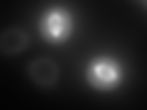Why is cancer not cured yet?
Why is cancer not cured yet? This is a common, and good question worth revisiting as often as possible until cancer is no longer a deafening diagnosis. The answer however, has many parts to it and can be difficult to explain in a short blog. Here's what we've got.
Reason 1: No two cancers are the same
Cancer, like depression, is caused by many factors and, like depression, the cure needs to be specific to the afflicted person.
In short, cancer is a somewhat misleading term that represents multiple forms of a disease where your healthy cells make copies of themselves (proliferate) when they shouldn't. This is the result of mutations that cause safety systems in your healthy cells to breakdown or malfunction thus causing a healthy cell to become cancerous. Want a good academic review on how cancer cells are made?
The process of transforming a healthy cell into a cancerous one is similar to a happy person becoming depressed. Multiple mutations can lead to cancer, just as any number of problems we face in life can lead to depression. Usually, more than one problem exists and eventually, our safeguards (against mutations or depression) become overwhelmed. Why does this matter? It means two people with the same type of cancer might have totally different mutations which require unique treatments.
To stay with the depression metaphor, I might be depressed because someone I love died, and you might be depressed because your career is not working out. While our depression might look the same, the cause of it is very different and giving me a different career wont fix my depression, but it might fix yours. Coming back to cancer then, you and I might both have skin cancer but the mutations that lead to that cancer could be different and the treatment that cures you may not cure me.
Reason 2: Cancer cells are dynamic and evolving rapidly
Cancer cells within a single patient are capable of evolving and becoming resistant to therapy.
Mutations causing cancer are more likely to happen when your cells proliferate (make copies of themselves) because they have to take your DNA out of its protected state and carefully duplicate it for the copied cell. During this process, the cell must be healthy to protect the DNA during the copying process. The abnormal environment of a tumor makes those cells unhealthy and, because they are proliferating a lot, some cells end up with many new mutations. These mutations can cause the cell to survive chemotherapy by allowing the cell to produce proteins capable of pumping the chemotherapeutic out of the tumor cell thus preventing the therapeutic from working. Other mutations can cause a cell to simply change the way it looks so our therapeutic drugs don't recognize it anymore. The list goes on, but essentially we are in an arms race with a shape shifting identity thief who is always changing itself with the potential of surviving better.
Reason 3: It's tough to target just cancer cells.
Its easy to kill cancer cells; its much harder to kill only cancer cells.
Often times you'll hear a news article about the latest drug that killed cancer cells in a lab. Truth is water will kill cancer cells in a lab. We have drugs that are very capable of killing cancer cells but unlike viruses or bacterial cells, cancer cells look almost identical to your healthy cells. Lets return to our depression metaphor. Looking at a group of people, it would be difficult to know who is depressed. You'd be left hoping to find some sign to indicate that one of them specifically is depressed. Now imagine you have anti-depressants that cause some bad side effects, but are worth it for a depressed person. You would not want to give that drug to every person in a room just because one of them is depressed. You need a way to give only that person the drug. This is a big problem in cancer therapy and is the primary reason it is not cured yet.
There is a very large amount of research that goes into looking for ways to be specific (here's a link to the National Cancer Institute's fact sheet on this). This could be done by finding a mutation in the cancer cell that produces a protein with a very unique structure, found in no other cell and then building a drug against that unique protein. Other therapies try to make use of the unique environment that surrounds tumor cells while still others look to see what would be lethal if lost in a tumor cell, but not a healthy cell. All have potential, all have limitations too.
Is there any hope that cancer will eventually be cured?
There is hope for future therapy though! Numbers are improving!
According to the National Cancer Institutes cancer statistics for 2016, death rates from cancer have declined by 23% between 1991 and 2012. That's almost 1.7 million lives. In breast cancer, nearly 249,000 deaths were prevented due to improved detection and treatment (36% decrease in mortality rate between 1999 and 2012). The numbers go on for many cancers. For those interested in specific research examples of future directions, there is a good deal of research looking into using your immune system as a SWAT team against the cancer. Other avenues of research include looking at synthetic lethality, where we deliver a combined "one-two" combo of therapeutics specifically tailored to the patients tumor type based on their mutations. Advances in our understanding of where tumor cells are weak and how to better target them are providing us with exciting possibilities!




